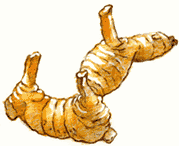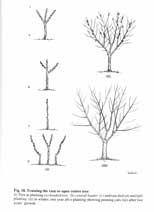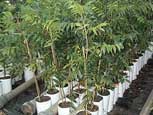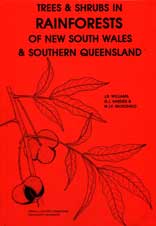June Newsletter
Put some spice in your life with Spice Plants
Make your meals taste absolutely fantastic with the addition of home grown  spices. As a culinary spice, there is virtually no such thing as an overdose and the spices are suitable for enhancing the flavour of a multitude of dishes. Fresh spices always taste better than the dried variety and they offer many health-promoting benefits. Here are some of the more popular and hardy spices that are ideally suited for a kitchen garden. For more information on a wide range of spices go to http://www.theepicentre.com/Spices/spiceref.html
spices. As a culinary spice, there is virtually no such thing as an overdose and the spices are suitable for enhancing the flavour of a multitude of dishes. Fresh spices always taste better than the dried variety and they offer many health-promoting benefits. Here are some of the more popular and hardy spices that are ideally suited for a kitchen garden. For more information on a wide range of spices go to http://www.theepicentre.com/Spices/spiceref.html
Galangal is a fantastic member of the ginger family. The plant has striking orchid-like blooms and is often found in subtropical and tropical gardens. The knobby root has a delicious exotic taste with a touch of pepper and ginger.
Cardamon is the dried, unripened fruit of a perennial member of the ginger family. The pods contain highly aromatic citrus-like, floral flavoured seeds with menthol undertones. Either crush the pod lightly and discard after cooking, or open and remove the seeds which can then be used whole or ground. The outer green pod is not eaten.
Turmeric is the thick, cylindrical rhizome or underground stem of a tropical plant belonging to the iris family. Finely grated it adds many health benefits and a brilliant yellow colour and earthy flavour to foods such as Indian curries, rice and vegetarian dishes.
Ginger is an underground stem that is grown widely in the tropics. Its medicinal and culinary uses have been well known in Asia for thousands of years. Ginger has a warm, sweet aroma and a hot, biting flavour. Two centimetres of freshly grated ginger root is equivalent to 1 tsp of dried ginger.
When to add fresh Spices
For a more distinct flavour add spices near the end of cooking, or at the beginning for more blended flavours.
Whole spices release flavour more slowly than ground or leaf form and are ideal for using in dishes with longer cooking times. For easy removal after cooking, tie in cheesecloth.
There is no general rule for the correct amount of spices and herbs to use, use to your desire.
Winter Pruning
The good news is that anyone can do it and with June upon us its the best time to head for your deciduous trees with the pruning shears. Pruning is a huge topic and there are many different trains of thought on the subject however the following is an attempt to keep it as simple as possible. For those of you who would like more detailed information specifically on fruit tree pruning I can highly recommend the book 'Pruning for Fruit' by Bruce Morphett. It's an 'easy to read' book packed with excellent illustrations that accompany directions.
Why Prune?
Firstly fruit trees do not have to be pruned in order to produce fruit. Fruiting is a natural occurrence to ensure the survival of the tree. Many gardeners may choose not to prune. Our thought on the subject is that although unpruned trees will crop, (particularly when young), they will suffer in the long-term without proper care. And after all, we are all looking for many years of successful fruit production. There are three good reasons to prune fruit trees.
Strength and Durability (Redirection)
Fruit trees can be trained into many forms, including espalier, vase or central leader. These training types ensure a strong framework with short and durable branches that enable the tree to carry its crop.
Cropping and Growth (Regulation)
Pruning regulates production by slowing vigorous growth of foliage to promote fruiting spurs or regulating the number and size of the fruit.
Health of the Tree (Renew)
To keep trees healthy and vigorous we look for "The Four D's": Diseased, Dead, Deformed, and Diagonal (crossing). Be ruthless, all of these need to be removed. It may seem severe but taking out weak branches will prevent further problems and boost the tree's immune reserves. Remember to remove any shoots that occur above the graft union.
Another type of pruning is summer pruning however we will cover this in a future article.
What fruit trees to prune and when?
This is the perfect time to start pruning deciduous fruit trees like stone fruit and pome fruit, grapes, mulberries, persimmons, figs and kiwifruit. Pruning needs to be carried out annually to stimulate fruit production. Don't confuse deciduous fruit trees with evergreen types such as citrus that only require minimal pruning nearer to spring.
Pruning methods
The "open center" method is similar in form to a wide bowl, radiating out from the trunk. The bowl is formed by 3 to 5 well-spaced main (scaffold) branches. Frequently seen in commercial orchards this method aims for an open centre to let in air and light by removing overcrowded branches in the middle of the tree and any that are rubbing against each other. When training a young tree cut the leader back and select the new shoots that grow from below the cut for future scaffold branches.
The "central leader" method. In this form, one main shoot is allowed to grow up in the center of the tree. Select two or three branches arising from this "central leader" that are pointing in different directions. The lowest branch should be at least 50cm from the ground. Cut the selected branches back keeping the lowest ones longer than the upper ones. The main stem is cut at about 1m in height. Keep all selected branches almost horizontal. Remove the narrow angled competing shoots from the top of the central stem and those near the tips of the side branches and keep the lower branches longer than the upper ones.
The "vase-shaped" method. This form of pruning is suitable for all pome and stone fruit. Its final shape should resemble a  wide-angled V shape. The aim is to select three or four branches at least 50cm above the ground and each pointing in a different direction. These will become the main leaders of the future tree and will be subdivided again in later years to form subleaders. Choose the best side branches and cut the main stem back to above the level of the highest side branch selected. Prune the outside shoots to an outside bud all at about the same level. If your tree is young and doesn't have enough side branches cut the main stem back to approx 1m and select suitable branches the next year. This is a better option than using inferior branches.
wide-angled V shape. The aim is to select three or four branches at least 50cm above the ground and each pointing in a different direction. These will become the main leaders of the future tree and will be subdivided again in later years to form subleaders. Choose the best side branches and cut the main stem back to above the level of the highest side branch selected. Prune the outside shoots to an outside bud all at about the same level. If your tree is young and doesn't have enough side branches cut the main stem back to approx 1m and select suitable branches the next year. This is a better option than using inferior branches.
A word about pruning
Pruning is the skilful balance between shoot growth and fruit production. How much pruning a tree needs is dependent on the type of tree, its location, the climate, when it flowers, the size and how much fruit is produced. At one extreme are trees such as peach and nectarine that only bear fruit on stems that grew the previous season, so they need fairly severe annual pruning to stimulate a flush of vigorous new shoots for the next year's crop. Citrus trees only need minimal (Renewable) pruning as the more leaves that are on a citrus tree, the larger and more numerous the fruit. Trees such as Figs and grapes need a more specialised type of pruning. Don't be daunted by pruning. With a little bit of research (a good book, a short course or the internet) you will achieve excellent results and high yields as well as acquiring a valuable skill that you can pass on to others.
For more information try these links
http://www.eap.mcgill.ca/MagRack/COG/COG_H_93_03.htm
http://www.wowpages.com/nga/EDIT/Articles/pruning.qua
Happy pruning,
Greg Daley
Making your land profitable with Pecan Nuts
 Highly recommended by the Australian Horticultural Exporters' Association for planting in the Lismore, Moree, Gatton and Hunter Valley districts pecan production is becoming an established industry in the northern areas of NSW. Stahmann Farms in Moree is an example of a hugely successful enterprise being the largest pecan producer in the Southern hemisphere. In 1997 Australian pecan producers exported 181 tonnes of nut in shell and 565 tonnes of kernel valued at $3.8 million. The Australian production is about 3000 tonnes per year (1995 figures), 40% of which is exported with the remainder being used here in Australia.
Highly recommended by the Australian Horticultural Exporters' Association for planting in the Lismore, Moree, Gatton and Hunter Valley districts pecan production is becoming an established industry in the northern areas of NSW. Stahmann Farms in Moree is an example of a hugely successful enterprise being the largest pecan producer in the Southern hemisphere. In 1997 Australian pecan producers exported 181 tonnes of nut in shell and 565 tonnes of kernel valued at $3.8 million. The Australian production is about 3000 tonnes per year (1995 figures), 40% of which is exported with the remainder being used here in Australia.
 The export market is largely dominated by the Americans. However, because Australia is in the Southern Hemisphere, it does offer opportunities to supply fresh product at the US off season. Currently the low Australian dollar offers further financial benefits.
The export market is largely dominated by the Americans. However, because Australia is in the Southern Hemisphere, it does offer opportunities to supply fresh product at the US off season. Currently the low Australian dollar offers further financial benefits.
Pecan culture, like most tree cropping systems, is more sustainable than other forms of agriculture. It is an environmentally sound use of the land and there is a good market for the end product. Cultivation of the soil is rarely necessary in a bearing orchard. Pecans offer a low density planting option with around 40 trees recommended per acre. Pesticide use is minimal or unnecessary. Sheep or cattle can be grazed between trees as they grow to production size, so the acreage can continue to produce income when the trees are quite young. Depending upon spacing, pasture will continue to be available long after the trees enter their production years. Harvesting takes place in the April to June period. Yields are about 20-30 kg/ tree or 2-2.5 tonnes/ ha which are considered good average yields in the northern coastal regions of NSW. Depending on the variety trees commence bearing from 5 years of age and are in full production at 10 years.
Grafted varieties produce a known quality of nut. Initially a higher cost their earlier production means a greater return on investment. There are many varieties available and specialised advice is recommended in choosing the most suitable ones for your area. Pecans are quite difficult to propagate successfully so new producers are well advised to get their trees from specialist nurseries.
The Orchard -
|
||
| Custard apples | Pecan nuts | Oranges & Mandarins |
| Kiwifruit | Avocadoes | Cherimoyas |
Recommended books (special offers for our readers)
 If you are passionate about rainforest trees and would like to learn more about the identification of these we can highly recommend the book Trees and Shrubs in Rainforests of New South Wales and Southern Queensland (140pages). Each page is loaded with diagrams of foliage and fruit, making rainforest identification a breeze. As a special offer for our on-line customers you can purchase the book for only $19 when accompanying your order. Rec. retail normally $35.
If you are passionate about rainforest trees and would like to learn more about the identification of these we can highly recommend the book Trees and Shrubs in Rainforests of New South Wales and Southern Queensland (140pages). Each page is loaded with diagrams of foliage and fruit, making rainforest identification a breeze. As a special offer for our on-line customers you can purchase the book for only $19 when accompanying your order. Rec. retail normally $35.
Pruning is a valuable skill for all small and large scale fruit tree growers. For detailed information specifically on fruit tree pruning I can highly recommend the book 'Pruning for Fruit' by Bruce Morphett. It's an easy to read book packed with excellent illustrations that accompany directions. Only $9.95 with your next order.
Testimonials
As always we love to hear from you. Thank you for the testimonials we continue to receive, they are very much appreciated. Our business continues to improve and grow due to the valued feedback of our customers. Greg
To post your message please contact us





